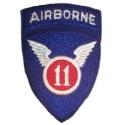United States Navy – Naval Construction Battalion 26 – Guadalcanal 1942-3
Jed has an excellent video of the creation of the SeaBees – to – Guadalcanal – and ending with the photo album put together by the men themselves.
Here is my rendition of the US Navy’s “SeaBee’s” working uniform while working on the Henderson Field airstrip on Guadalcanal in December 1942 and on into 1943. It was based off of original home footage shot by the men themselves.
 Background:
Background:
The US Navy did not have construction men in its’ ranks at the start of the war. Later on after enlisting a number of veteran construction men, the Navy formed CB’s or Construction Battalions. These men were to military trained to build, and fight. Prior to this, the government was forced to use contractors, or civilians, for their construction needs. After the creation the NCB units, the nickname “SeaBee’s” came from the initials, and thus a legend was born. Made famous by John Wayne in the movie “The Fighting Seabees”, the unit became well known. Equipment
Equipment
Here I am wearing the US Army “1st Pattern” coveralls, USN issued white underwear…
View original post 56 more words
Posted on June 19, 2015, in WWII and tagged 1940's, family history, Guadalcanal, History, Japan, Military History, Navy, SeaBees, WWII. Bookmark the permalink. 39 Comments.







Thanks for the reblog!
LikeLike
My pleasure, you did a great job on the post and I wanted to share it with my friends and visitors.
LikeLike
This is some amazing stuff. Stuff that can never fade from our memories though I think our Muslim in Chief would rather talk about the good Muslims as opposed to the bad..
LikeLike
Sent a link to him; a friend’s father served extensively as a Seabee in the SWP. Tons of private photos.
LikeLike
FANTASTIC!
LikeLiked by 1 person
Very interesting blog.Hope one day peace will be all over the world but think it”s like “utopia’
LikeLike
If everyone hoped for that – we just might get there. I keep trying to show how devastating war can be…..
LikeLike
Excellent reading, finally know where the name SeaBees came from, interesting to read that civilian contractors were actually used at the start of the war.
LikeLike
People nowadays just take it for granted that these groups and many others have either always been there or magically appeared when they were needed. I’m trying to get to the root of things. Thanks for being here, Ian.
LikeLiked by 1 person
Enjoy your site gp, keep up the great work.
LikeLike
I’m always trying to improve, Ian – any suggestion?
LikeLiked by 1 person
I always wondered how they came together since I have heard of them. Very interesting!
LikeLike
😛
LikeLiked by 1 person
Now I know! Thanks.
LikeLike
Anytime!
LikeLiked by 1 person
My husband’s uncle was a CB! Men behind the lines, working steadfastly so our troops could run their missions.
LikeLike
Every job in the service is a link to the others; each important and each depended on – I try to emphasize that when someone says, ‘But he never saw combat.’ Sea Bees and Army Engineers though, did see combat.
LikeLiked by 1 person
Trouble is these were real warriors John Wayne wasn’t; he never donned a military uniform and served his country, thought he was to important. Wayne cannot compare to these men and they are to fine to be compared to him.
LikeLike
Sounds as though you read the book, “Five Came Back,” there were quite a few who agreed with you. He kept saying he would enlist, after this movie, after that war bond tour, etc. But, you have to admit, he made the American G.I. larger than life on the big screen which increased enlistments, boosted morale, gave hope to the civilians and made our cause look good.
LikeLike
That may be so gp but I wonder how he could sleep at night, getting men to go and take up the fight that he was to chicken to do,Duke? more like duchess, although duchesses have more courage than he.
LikeLike
I suppose he had his reasons, but when all his friends around him were going, it’s hard to imagine what they were. I can only suspect he was an isolationist.
LikeLike
also gp there was no reason to make your cause LOOK good it WAS GOOD!
LikeLike
😎
LikeLike
I remember the film ‘The Fighting Seabees’ very well, and this post was a good tribute to the guys who did an essential job, often in danger at the front.
Best wishes, Pete.
LikeLike
I’m afraid I do not know what the British construction crews were called, do you have any info on them, Pete? Were any sent to the CBI?
LikeLike
That work was mostly done by The Royal Engineers in the British Army, but the majority of the unskilled labour was provided by The Pioneer Corps. Here is a short history of that unit.
Regards, Pete.
LikeLiked by 1 person
Thank you, Pete. You must be very proud of your father, his unit has a long, honorable history. Thank you for the link.
LikeLike
I didn’t write this GP. My Father was a regular in the Royal Artillery, from 1936. He was Regimental Sergeant Major, and served mostly in India through the war, leaving the Army in 1947. We didn’t get on that well, unfortunately.
LikeLike
It is a shame you two didn’t get on well. Did he happen to at some point give you any stories of India? Was his name Pete Johnson as well? Do you know his unit? Sorry so many questions, but we don’t get many people talking about the CBI around here.
LikeLike
He told me lots of stories GP, mostly about animals, snake charmers, playing sports, and having a good life. His name was Arthur. He started the war in AA batteries at Dover in 1939-40. He later went on to become an instructor in India, for both AA and 25-pound field artillery pieces. He worked with Sikh and Punjabi units mostly, and travelled around most of India. They anticipated a Japanese attack from the north-east, but of course it never happened.He was involved in the fighting during the Partition Riots, but he saw no action against the Japanese. His war was a good one, playing cricket, hunting animals, and living in a large house with servants. He gave me a Gurkha Kukri, which I later passed on to another relative.
On the other hand, his older brother was in a field artillery unit in Burma, using guns carried on mules, and saw a lot of hard fighting at close range. He was captured there, and spent a bad time as a POW of the Japanese.
Regards, Pete.
LikeLiked by 1 person
Thank you very much for sharing that, Pete. Do you happen to have any posts in regards to to this?
LikeLike
Not really, as my relationship with my Dad was something of a problem during the late 1960s. He walked out on my Mum (and me) in 1976, and affected our lives badly at the time. I have written about those times, but not with reference to his (or his brother’s) army service. Sorry.
LikeLike
I’m sorry for the pain he caused your family.
LikeLike
Jed’s article sparked my interest in the “uniforms”. Good video, too.
LikeLike
Thank you, I’m sure he’ll like hearing that, Swabby.
LikeLiked by 1 person
amazing post, love these photos! I had a great uncle who was a Seabee, never really understood what that was, thank you!
LikeLike
That video will show you exactly what your uncle did – so this is right up your alley!! Thanks for coming by, Hollie.
LikeLiked by 1 person
oh, indeed, a treat for sure!
LikeLike
😛
LikeLike